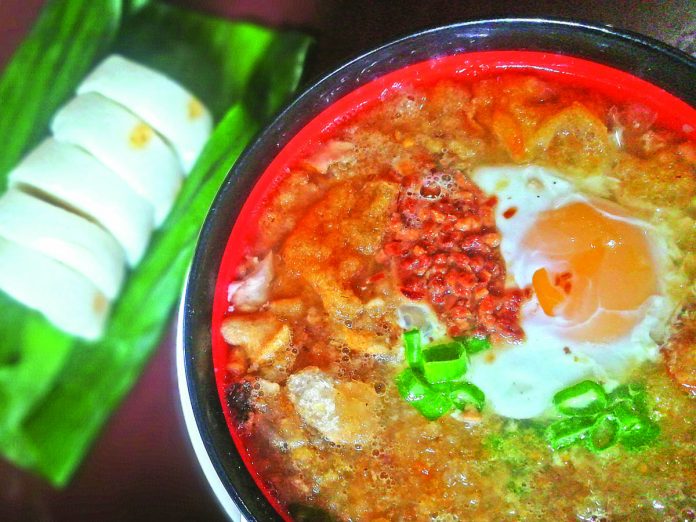
ILONGGOS are down-right serious about street food. To the point that a handful of unassuming local hawkers here have amassed cult-like followings and hordes of loyal patrons, merely by word-of-mouth – proving without a doubt that the best advertising is done by satisfied customers.
From crowd-pleasing tusok-tusok fare, to the quintessentially Ilonggo batchoy, to rich desserts that could put its counterparts in other regions to shame – you name it, Iloilo can serve it you, by the side of the road, on flimsy paper plates, on charming mismatched bowls and saucers.
In my flights of fancy, I may or may not have compiled a street food itinerary, in the hopes that one day I’ll have the rare privilege to tour “No Reservations” legend Anthony Bourdain around my vibrant city. But now, the chances of that happening are as slim as Iloilo’s culinary families revealing their generations-kept secret recipes. (Rest in peace my hero, I know you’re up there at the big Pho place in the sky.)
So in lieu of an appearance on a syndicated TV series, I’m offering here instead a rundown of a few of Iloilo’s cult street food favorites.
We don’t have our own divisive Netflix “Street Food” episode just yet (beaten to the punch by Cebu), but Iloilo’s wayside cuisine spots too deserve their time under the limelight. Here’s how you can eat like a local in the “City of Love.”
HOT TO HANDLE: Jo Ann’s Fishball
Have your barbeque sticks at the ready, there is no other street food in Iloilo City as worshipped and well-loved as Jo-Ann’s Fishball in scenic Molo Plaza.
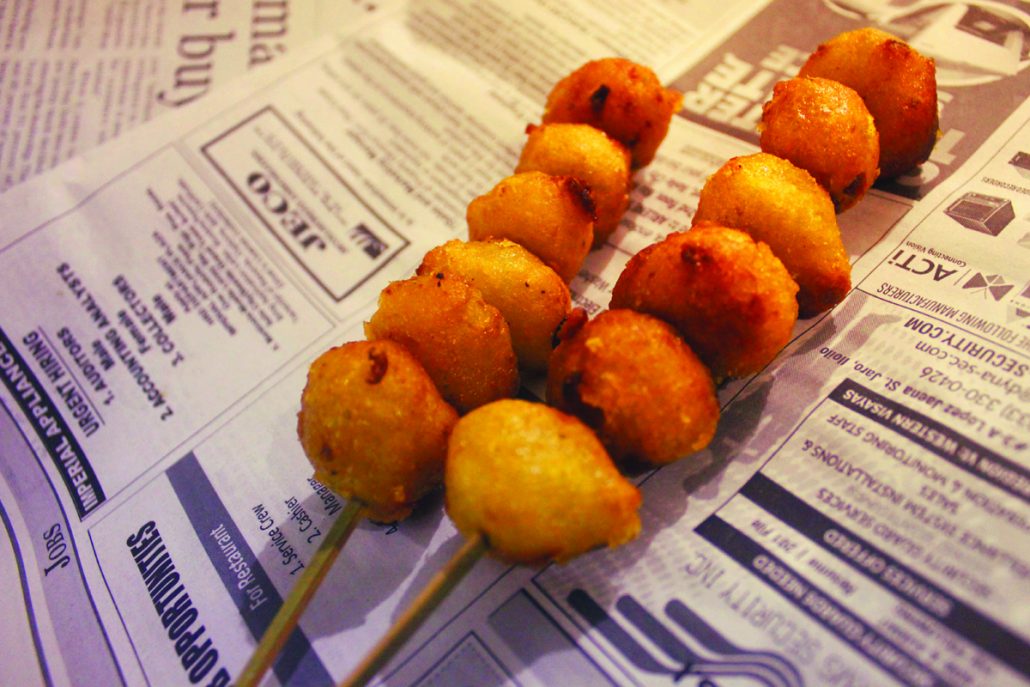
Owner Virginia Camandero shares that her mother, the namesake of the business, started with a lone pushcart in the 1980s, selling her fishballs at 25 centavos apiece. Come 4 p.m. every day – nearly four decades later – the delicacy now sells Php5 per stick, with a stall along each corner of the bustling plaza, to cater to the high demand and influx of their swarm of devoted regulars.
Among them is Palanca Award winning writer and University of the Philippine Visayas professor Dulce Maria Deriada. A long-time resident of Molo district, Deriada attests to her nostalgic habit of capping off long days with a few sticks of Jo-Ann’s fishballs and sitting on a park bench facing the St. Anne Parish Church across the plaza – marveling at the majestic structure (constructed in 1831) and its gothic design, while partaking her favorite local street food.
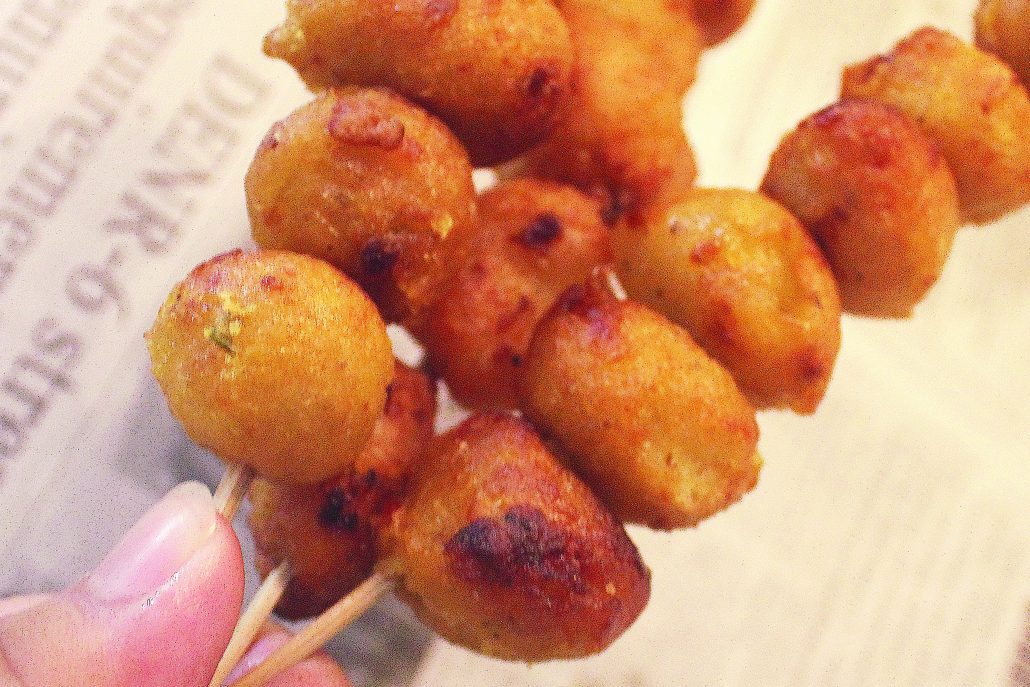
The disciples of this famous fishbolan fawn over its bountiful use of real fresh fish flakes, as well as its unparalleled taste and crunchy exterior. For me though, Jo-Ann’s main draw is its signature sauces – labelled 1 to 4 in ascending spiciness, ranging from the traditional sweet to heat that could leave you teary-eyed and gasping for air.
Can your taste buds survive this? Getting its heat from crushed kutitot (siling labuyo in the local Hiligaynon), Jo-Ann’s sauce No. 4 comes off as benign with the first bite, before revealing its insidious fieriness, building up to a burning crescendo that will leave your lips quivering and you reaching out for that extra bottle of water.
THE NEW CHALLENGER: Batchoyan ni Jasmin
Now here’s a hot-button issue among Ilonggos: Where can you eat the best batchoy in the city?
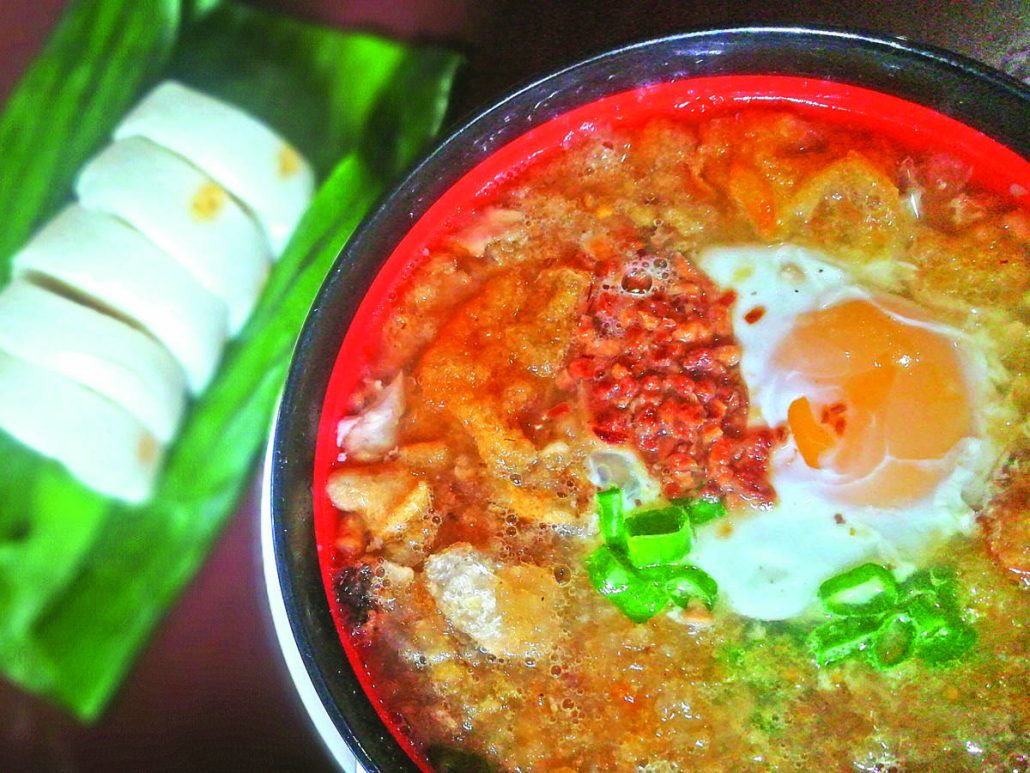
Most will probably prattle about the older establishments, naming Netong’s, Deco’s, or Popoy’s, among others – each of which have their own claims to be the real “original” La Paz batchoy. However, a new challenger for the title has come to the fore – and weirdly enough, it’s not even in La Paz district.
Some 20 kilometers or so outside of the city, in Ilawod, Santa Barbara, Iloilo Province, Batchoyan ni Jasmin is giving its older competitors a run for their money.
First started by Jasmin Sobredo in 2015, the batchoyan is a five-minute tricycle ride from the Santa Barbara town square, open every day from 8:30 a.m. until their ingredients and supplies last – usually till around 3 p.m. after their lunchtime peak hours.
No less than famed historian and gourmand Ambeth Ocampo has raved about the fairly new street-side spot which has grown popular due to viral recommendations.
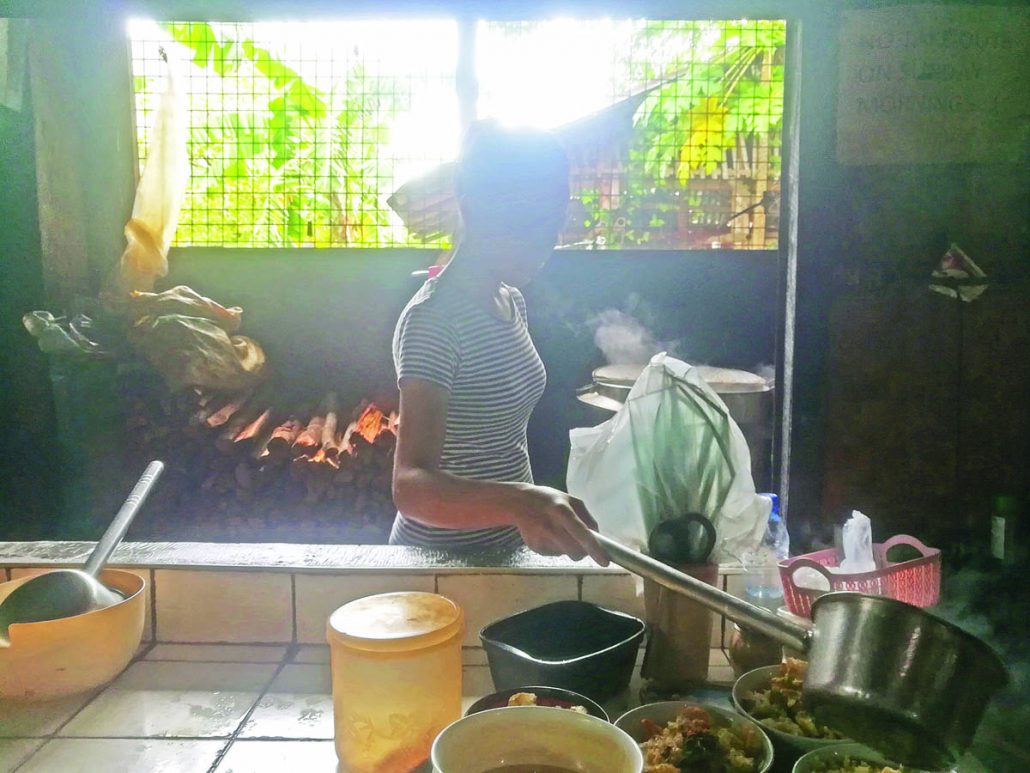
“Sobredo started [her] batchoy stall in a hut, with five kilos of ingredients to make a deep pot of the iconic noodle dish. [It was] was sold out by 10 a.m.” Ocampo related in a Facebook post. “Today, she cooks 50 to 80 kilos depending on demand. It may not be the original from La Paz, but it’s one of the best I’ve tasted.”
Topped with a generous helping of chicharon and chives, Batchoyan ni Jasmin’s thick miki noodles and freshly-sliced pork innards are complemented by a rich pork broth that veers more toward the savory-sweet side. The dish is best paired with puto, and if you can’t get enough of the tasty soup stock, you can always ask for more free of charge.
ONE GENERATION TO THE NEXT: Bingkahan sa Mohon
The bibingka is often seen as a seasonal dessert, a beloved Filipino kakanin that has grown synonymous with Christmas and Simbang Gabi. But why limit your cravings for the sweet course to just the yuletide season, when Bingkahan sa Mohon makes them fresh off their wood oven whole-year-round.
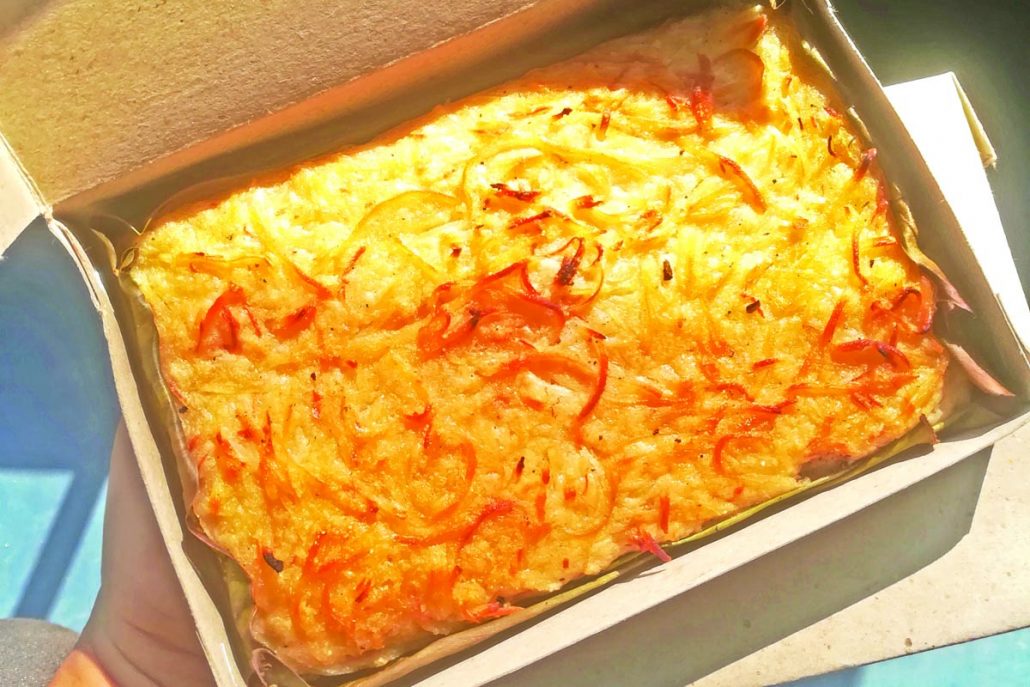
Mohon is 10 kilometers from Iloilo City Proper, the boundary of Villa Arevalo District and Oton – also where matriarch Felicidad Animas began her bibingka business nearly 70 years ago, in the early 1950s.
Smooth and milky, comparing the bibingkas of Bingkahan sa Mohon to the half-burnt frisbees sold in front of most churches would be sacrilege. Made from generous portions of grated coconut and only the best ingredients, the bibingkas are baked in pans lined with banana leaf.
Its silky texture and subtle sweetness makes it a sought-after dessert, beckoning customers to buy whole plates at only P50 each and rendering this Ilonggo delicacy hard to come by, sold only four days a week (Friday, Saturday, Sunday, and Monday.)
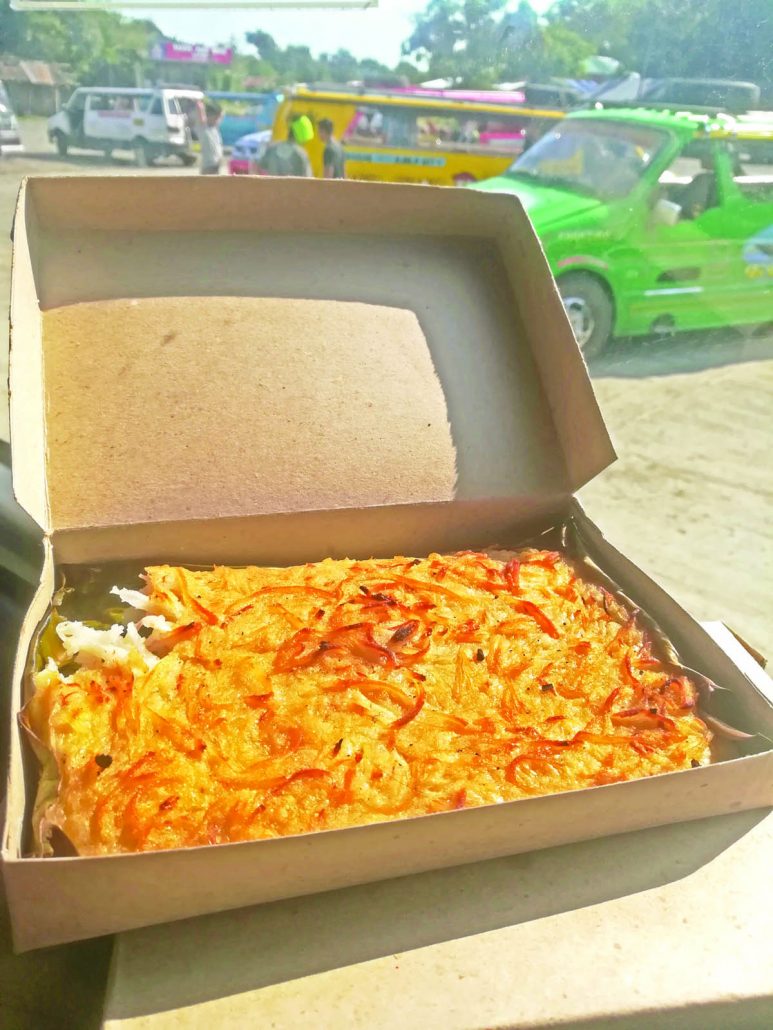
With Animas’ product quickly growing in popularity, her earnings from the store proved enough provide her livelihood and send all of her children to school. Since Felicidad’s passing, her offspring have taken the reins of Bingkahan sa Mohon, now synonymous with its home barangay and an indelible local icon.
Karly Animas, who will be the third generation when she eventually takes over the family business, says her grandmother’s recipe is kept under lock and key and is known only by select personnel.
Iloilo has more to offer. With the city’s busy streets and ever-changing landscape, who knows, the next cult street-side grub hub may be just around the corner. Ready for your own Iloilo street food crawl?/PN



